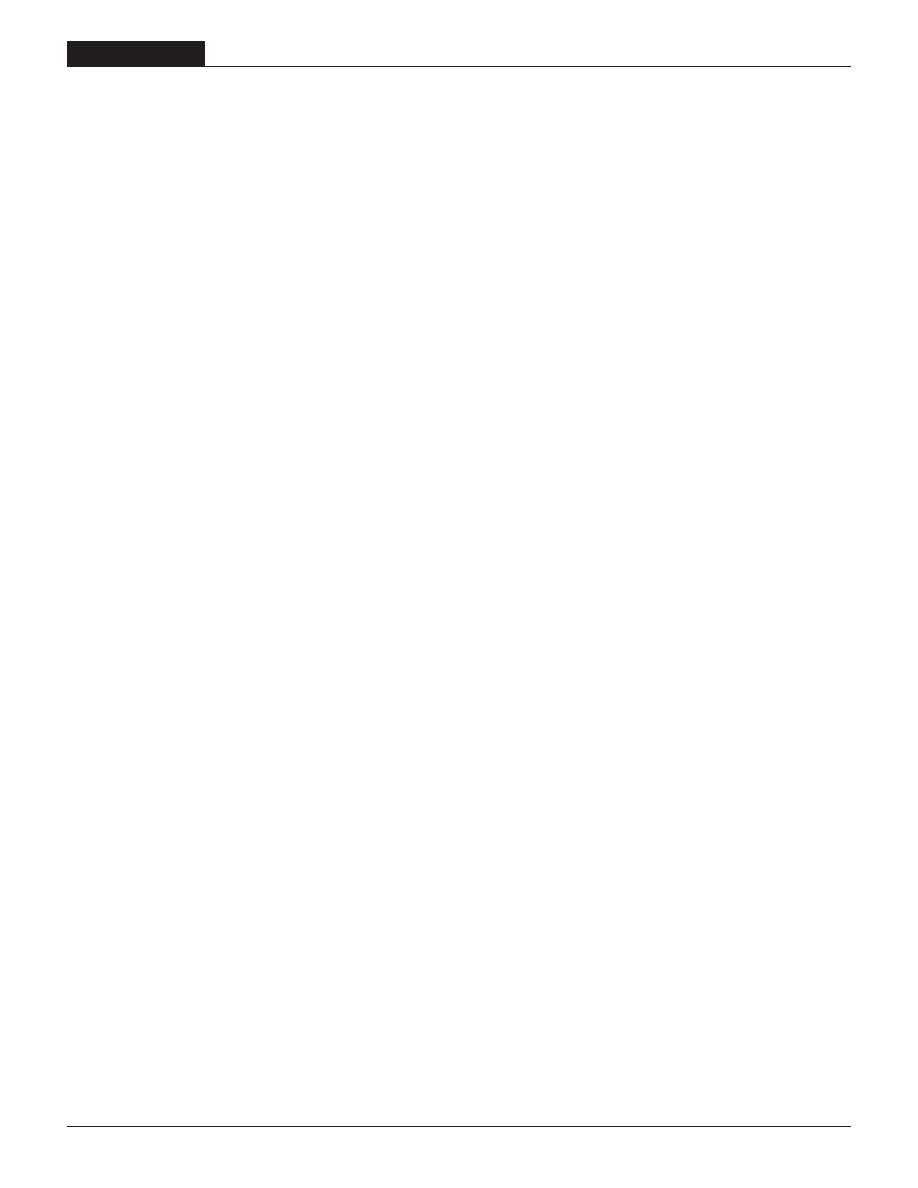- 您现在的位置:买卖IC网 > PDF目录231088 > TWR-3.3/4-15/250-D12N 3-OUTPUT DC-DC REG PWR SUPPLY MODULE PDF资料下载
参数资料
| 型号: | TWR-3.3/4-15/250-D12N |
| 元件分类: | 电源模块 |
| 英文描述: | 3-OUTPUT DC-DC REG PWR SUPPLY MODULE |
| 文件页数: | 6/9页 |
| 文件大小: | 301K |
| 代理商: | TWR-3.3/4-15/250-D12N |

XWR Series
2 2 W A T T , T R I P L E O U T P U T D C / D C C O N V E R T E R S
6
3. Any series inductance considerably complicates the added capacitance
therefore try to reduce the inductance seen at the converter’s output.You
may need to add BOTH a cap at the converter end and at the load (effec-
tively creating a Pi lter) for the express purpose of reducing the phase
angle which is seen by the converter’s output loop controller. This tends to
hide (decouple) the inductance from the controller. Make sure your power
conductors are adequate for the current and reduce the distance to the
load as much as possible. Very low noise applications may require more
than one series inductor plus parallel caps.
4. Oscillation or instabilility can occur at several frequencies. For this reason,
you may need both a large electrolytic or tantalum cap (carrying most
of the capacitance) and a small wideband parallel ceramic cap (with
low internal series inductance). Always remember that inside real world
capacitors are distributed trace inductance (ESL) and series resistance
(ESR). Make sure the input AC impedance is very low before trying to
improve the output.
5. It is challenging to offer a complete set of simple equations in reasonable
closed form for the added output capacitance. Part of the difculty is accu-
rately modeling your load environment. Therefore your best success may
be a combination of previous experience and empirical approximation.
Maximum Current and Temperature Derating Curves
The curves shown below indicate the maximum average output current
available versus the ambient temperature and airow. All curves are done
approximately at sea level and you should leave an additional margin for
higher altitude operation and possible fan failure. (Remember that fans are
less efcient at higher altitudes). These curves are an average – current may
be greater than these values for brief periods as long as the average value is
not exceeded.
The “natural convection” area of the curve is that portion where self-heat-
ing causes a small induced convective airow around the converter without
further mechanical forced airow from a fan. Natural convection assumes
that the converter is mounted with some spacing to adjacent components
and there are no nearby high temperature parts. Note that such self-heating
will produce an airow of typically 25 Linear Feet per Minute (LFM) without a
fan. Heat is removed both through the mounting pins and the surface of the
converter.
Many systems include fans however it is not always easy to measure the air-
ow adjacent to the DC/DC converter. Simply using the cubic feet per minute
(CFM) rating of the fan is not always helpful since it must be matched to the
volume of the enclosure, the outside ambient temperature, board spacing, the
intake area and total internal power dissipation.
Most PWM controllers, including those on the TWR’s, will tolerate operation
up to about +100 degrees Celsius. If in doubt, attach a thermal sensor to the
package near the output components and measure the surface temperature
after allowing a proper warm-up period. Remember that the temperature
inside the output transistors at full power will be higher than the surface
temperature therefore do not exceed operation past approximately +100 deg.
C on the surface. As a rough indication, any circuit which you cannot touch
briey with your nger warrants further investigation.
It is probably more important in your system that all heat is periodically
removed rather than having very high airow. Consider having the total
enclosure completely recycled at least several times a minute. Failure to
remove the heat causes heat buildup inside your system and even a small
fan (relative to the heat load) is quite effective. A very rough guide for typical
enclosures is one cubic foot per minute of exhausted airow per 100 Watts of
internal heat dissipation.
Efciency Curves
These curves indicate the ratio of output power divided by input power at
various input voltages and output currents times 100%. All curves are mea-
sured at +25°C ambient temperature and adequate airow.
相关PDF资料 |
PDF描述 |
|---|---|
| TLV431BCDBZT | 1-OUTPUT THREE TERM VOLTAGE REFERENCE, 1.24 V, PDSO3 |
| TLV431BIDBVR | 1-OUTPUT THREE TERM VOLTAGE REFERENCE, 1.24 V, PDSO5 |
| TPS2104DBVTG4 | SPECIALTY ANALOG CIRCUIT, PDSO5 |
| TPS3825-50DBVTG4 | 1-CHANNEL POWER SUPPLY SUPPORT CKT, PDSO5 |
| TNY275PG | 0.294 A SWITCHING REGULATOR, PDIP7 |
相关代理商/技术参数 |
参数描述 |
|---|---|
| TWR-5/1000-12/125-D5A | 功能描述:DC/DC转换器 8W +/-5/+/-12V RoHS:否 制造商:Murata 产品: 输出功率: 输入电压范围:3.6 V to 5.5 V 输入电压(标称): 输出端数量:1 输出电压(通道 1):3.3 V 输出电流(通道 1):600 mA 输出电压(通道 2): 输出电流(通道 2): 安装风格:SMD/SMT 封装 / 箱体尺寸: |
| TWR-5/1000-12/125-D5A-C | 功能描述:DC/DC转换器 8W +/-5/+/-12V RoHS:否 制造商:Murata 产品: 输出功率: 输入电压范围:3.6 V to 5.5 V 输入电压(标称): 输出端数量:1 输出电压(通道 1):3.3 V 输出电流(通道 1):600 mA 输出电压(通道 2): 输出电流(通道 2): 安装风格:SMD/SMT 封装 / 箱体尺寸: |
| TWR-5/1000-12/210-D12A | 功能描述:DC/DC转换器 10W +/-5/+/-12V RoHS:否 制造商:Murata 产品: 输出功率: 输入电压范围:3.6 V to 5.5 V 输入电压(标称): 输出端数量:1 输出电压(通道 1):3.3 V 输出电流(通道 1):600 mA 输出电压(通道 2): 输出电流(通道 2): 安装风格:SMD/SMT 封装 / 箱体尺寸: |
| TWR-5/1000-12/210-D12A-C | 功能描述:DC/DC转换器 10W +/-5/+/-12V RoHS:否 制造商:Murata 产品: 输出功率: 输入电压范围:3.6 V to 5.5 V 输入电压(标称): 输出端数量:1 输出电压(通道 1):3.3 V 输出电流(通道 1):600 mA 输出电压(通道 2): 输出电流(通道 2): 安装风格:SMD/SMT 封装 / 箱体尺寸: |
| TWR-5/1000-12/210-D24A | 功能描述:DC/DC转换器 10W +/-5/+/-12V RoHS:否 制造商:Murata 产品: 输出功率: 输入电压范围:3.6 V to 5.5 V 输入电压(标称): 输出端数量:1 输出电压(通道 1):3.3 V 输出电流(通道 1):600 mA 输出电压(通道 2): 输出电流(通道 2): 安装风格:SMD/SMT 封装 / 箱体尺寸: |
发布紧急采购,3分钟左右您将得到回复。